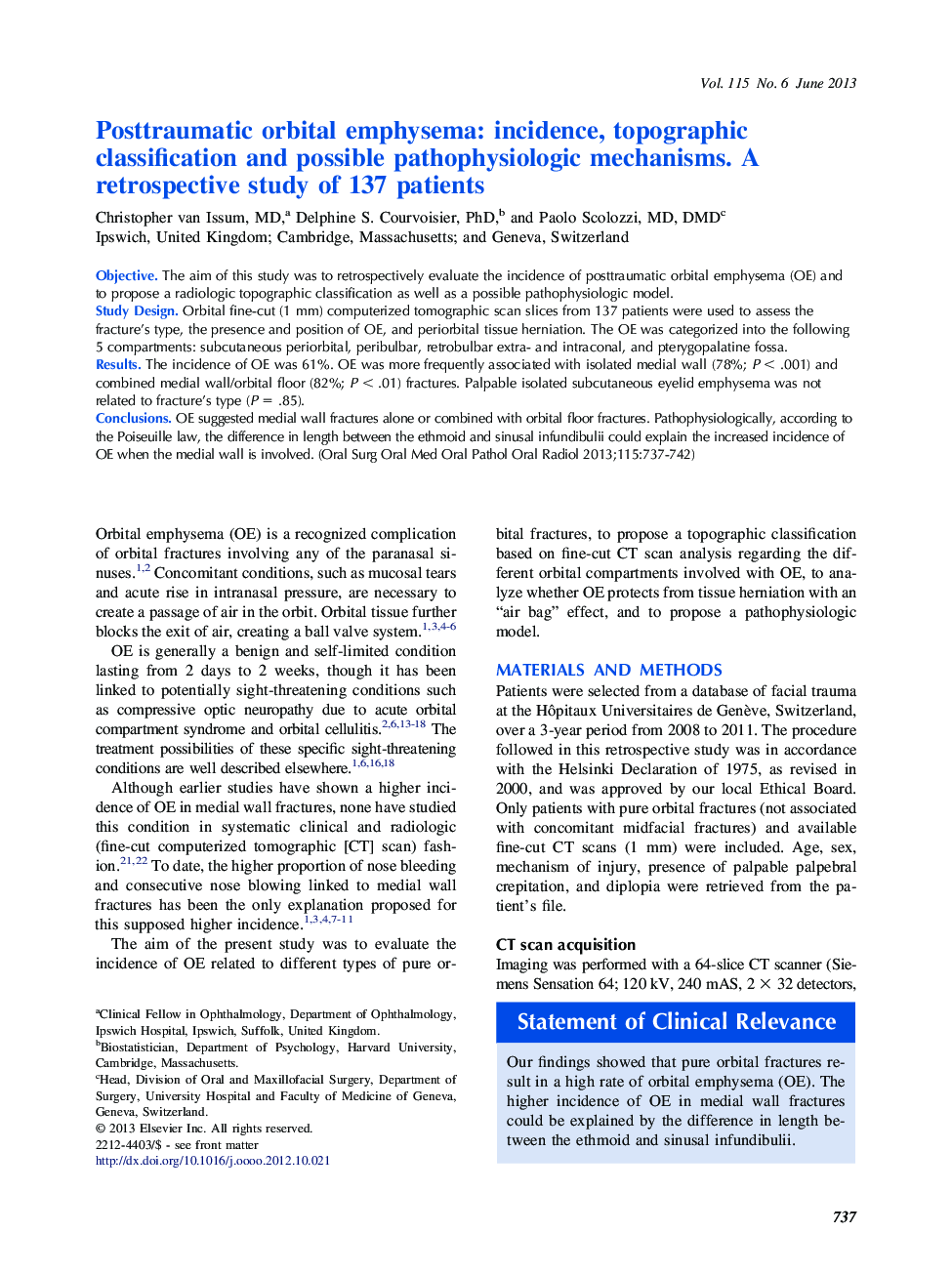| Article ID | Journal | Published Year | Pages | File Type |
|---|---|---|---|---|
| 6058467 | Oral Surgery, Oral Medicine, Oral Pathology and Oral Radiology | 2013 | 6 Pages |
ObjectiveThe aim of this study was to retrospectively evaluate the incidence of posttraumatic orbital emphysema (OE) and to propose a radiologic topographic classification as well as a possible pathophysiologic model.Study DesignOrbital fine-cut (1 mm) computerized tomographic scan slices from 137 patients were used to assess the fracture's type, the presence and position of OE, and periorbital tissue herniation. The OE was categorized into the following 5 compartments: subcutaneous periorbital, peribulbar, retrobulbar extra- and intraconal, and pterygopalatine fossa.ResultsThe incidence of OE was 61%. OE was more frequently associated with isolated medial wall (78%; P < .001) and combined medial wall/orbital floor (82%; P < .01) fractures. Palpable isolated subcutaneous eyelid emphysema was not related to fracture's type (P = .85).ConclusionsOE suggested medial wall fractures alone or combined with orbital floor fractures. Pathophysiologically, according to the Poiseuille law, the difference in length between the ethmoid and sinusal infundibulii could explain the increased incidence of OE when the medial wall is involved.
